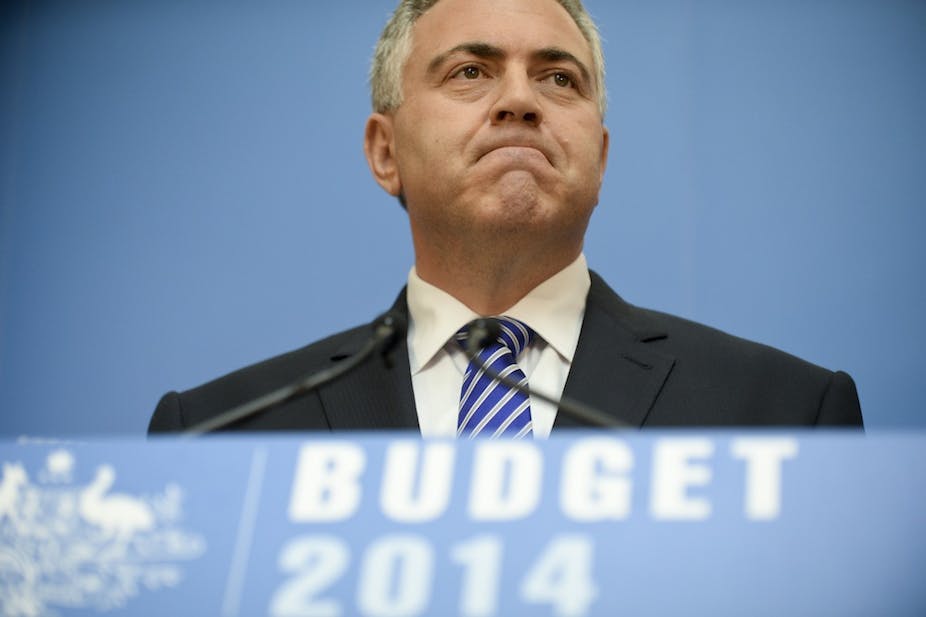The Abbott-Hockey government is continuing to budget for a deficit. This means it is pumping more spending into the economy than it is taking out. The amount of this stimulus is being reduced; the size of the federal government deficit is forecast to fall from $50 billion to $30 billion in 2014-15, a cut of about 1.2% of GDP. It is then expected to continue to fall gradually to be in approximate balance by 2017-18.
Given the delicate state of Australia’s macroeconomy, the cut in the stimulus will have some negative effect. The fall in the net federal government spending will tend to detract from overall spending. Since aggregate spending has been quite weak, the cut in government stimulus could decrease economic activity and lead to higher unemployment.
While there will be lots of political arguments about the details of the budget and the relative winners and losers, the macroeconomic question comes down to whether the economy will respond badly to the reduction in budgetary stimulus.
The answer is that it will probably have very little effect this year. The economy has been gradually recovering in the aftermath of the resources boom and global financial crisis, so recovery might be delayed somewhat but the changes in the budget settings are not likely to be big enough to have much effect.
One consequence may well be that the Reserve Bank of Australia decides to keep interest rates lower for longer, to encourage people to borrow and spend, offsetting any contractionary effect from the budget. The Australian dollar might also fall as a consequence, since foreigners will be less inclined to send their money here if they expect lower interest rates. The effect of these changes would be to support domestic spending and working to negate any contractionary effect of the budget.
The budget forecasts are for subdued growth and low inflation. Treasury is forecasting a slight pick-up in household spending but offset by a significant contraction in (especially mining) investment. Nominal GDP is forecast to grow at just 3% next year, which means that businesses are unlikely to see top-line revenue growth much in excess of this level. And wages growth will also be around 3%, just marginally faster than consumer price inflation.
This is all predicated on the exchange rate staying at about the current level. If the fall expected in the terms of trade leads to a fall in the real exchange rate, then Australians are likely to spend more on domestic goods and the economy may well run faster. This would involve a switch in spending as our ability to buy foreign goods falls with the lower currency.
Once we look beyond the 2014-15 year, the pull-back in the federal government stimulus to the economy continues apace. Much of the same argument as developed above applies. The central question is whether the economy will have sufficient growth in private spending to offset the gradual government pull-back.
The Treasury modelling is not very optimistic. Growth is expected to track below trend for an extended period.
What is not clear is how the big expenditure switch in the Budget will play out. Government transfers to people who are likely to spend it, is to some extent being replaced by government spending on infrastructure. The hope is that the increased investment will gradually increase the productive capacity of the economy, generating jobs growth and spending down the track (highway in this case). From a short-run macroeconomic point of view it does not matter much what the dollars are spent on – though of course it matters to the people concerned – but in the longer run, investment should increase the well-being of all of us.
The other big switch in the budget involves the gradual movement of responsibility for spending on hospitals and schools back to the states. To the extent that states simply increase their debt to fund these additional expenses there is no overall reduction in debt, just less federal debt and more state debt. If the states prefer not to increase debt, they will probably have to increase their taxes or reduce the cost of the services being provided. The transfer for funding responsibilities for schools and hospitals back to the states is however consistent with the Abbott governments stated position on federal-state relations.

